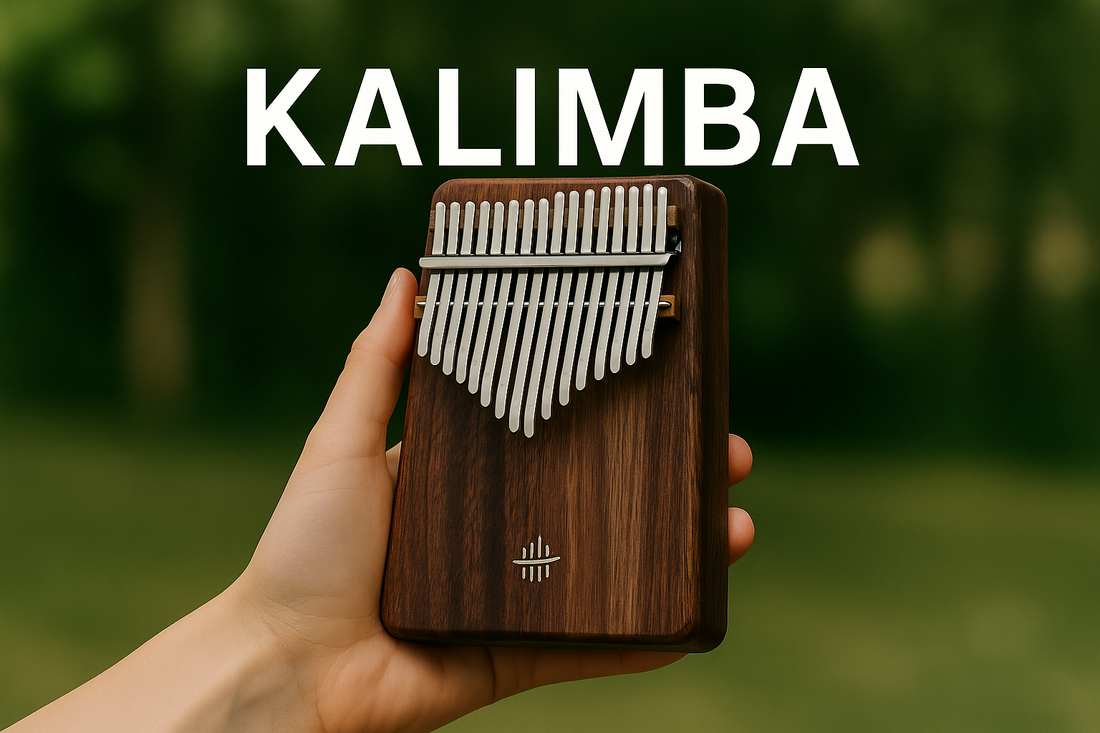Why the kalimba is perfect for beginners
The 17-key kalimba tuned to C major offers a warm sound and intuitive handling. Two thumbs, a few markers (C/Do, D/Ré, E/Mi…), and you can play your first notes in just a few minutes .
Quick set-up (2 minutes)
-
Sit comfortably with the kalimba resting in your palms or on your knees .
-
Use your thumbs to play. Short nails (or soft files) = cleaner touch.
-
Download the Notes Guide (C/Do → E6/Si) if needed.
Quick warm-up (2 minutes)
Play slowly:
-
C – D – E – F – G – A – B – C (then go back down)
-
Breathe calmly, keep a steady tempo .
Your first melody (5 minutes)
Try this simple pattern (letters = English names, in parentheses solfege):
-
C (C) – E (Mi) – G (G) – E (Mi)
-
D (D) – F (Fa) – A (La) – F (Fa)
-
E (Mi) – G (Gold) – B (Si) – G (Gold)
Repeat each line 4 times before moving on to the next. The goal: consistency and a nice sound , not speed.
Rhythm tip
Count “ 1-and-2-and ” out loud. Each note on “1,” “2,” or “and.”
10-minute routine (to keep)
-
2 min: C → C scale (slow, clean).
-
3 min: pattern above, without rushing.
-
3 min: play the melody twice in one go.
-
2 min: free — improvise around C–E–G (Do-Mi-Sol).
“Better short and regular than long and rare”: 10 minutes every evening > 1 hour on Sunday.
Go further
-
Add a metronome (60→72→84 BPM).
-
Explore C–F–G (C–F–G) chords.
-
Record yourself with your phone: you will hear the progress.
CTA
Ready to get started? Choose your Kalimba ViaCam model – comes with bag, hammer, stickers & guide .
Recommended visuals :
-
Macro photo of the blades with C/Do labels
-
GIF “right thumb → left thumb” (simple gesture)
-
Screenshot of the Notes Guide

